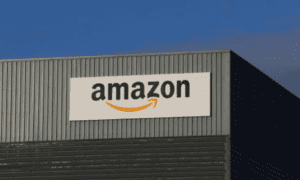Printing solutions have gone through many exciting advances over the past 25 years. While the basic technologies behind inkjet and laser printers were invented in the 1960s, these systems have been refined to meet today’s challenges. Printers themselves have become far more technically advanced, and they are able to handle a greater volume of work with better quality and less waste. The types of technology used in newer printers include touchscreen controls, mobile printing, cloud printing, and 3D printing.
The biggest influence on the printing industry has been the advent of digital printing. Digital printing has in some cases pushed out traditional offset printing. More industries are beginning to use digital printing technologies, leading to a shift in the industry.
Central Business Solutions explains these new technologies and how they can be used to enhance efficiency in every industry.
Advancements in Laser Printing
While laser printers have taken a back seat to inkjet printers in the home market thanks to the lower startup costs, laser printers are still extremely popular in business applications. While most people are familiar with the laser printer, new models have come to produce increasingly better print quality while saving on power and supplies. Laser printers, especially color laser printers, have advanced to the point where they can produce beautiful photorealistic prints at home or in the office.
Laser printers work by scanning a laser beam across a drum located inside the printer. The laser builds up a pattern of static electricity on the paper. The toner is electrostatic and adheres to the roller, then being transferred and fused onto the paper in a complete printout.
A laser printer is faster and has better print quality than an inkjet. This technology helps to keep businesses of all kinds running, even as paper is beginning to take a back seat to digital communications.
Better Inkjet Printing
Inkjet printers work by placing micro-droplets of ink onto paper. These tiny dots make up the image or letters in the printed paper. With inkjet printing being more accessible than laser printing due to the cost of the machines, inkjet printing is an important part of the home technology set-up.
The disadvantages of inkjet printing are that it is slower and causes more ink to leak out than with a laser printer. This means that printed copies may have blots or blemishes. Inkjet printers also need to have their print heads cleaned much more frequently than laser printers. Refill ink is more expensive than laser toner pound for pound.
Large Format Printing
Print-on-demand technologies include large-format printing. Industrial plans, blueprints, and promotional signage can be made using large-format printers. These printers are more precise and easier to use than they were in the past. They are very popular in academic settings as well, where professors and students need to print scientific posters.
Print-On-Demand
Print-on-demand technologies are beginning to compete with offset printing on a large scale. For example, books with smaller print numbers can be printed on-demand from Amazon and other e-commerce sites. Traditional offset printers may need to watch out for the increasing competition from print-on-demand services in order to stay abreast of their industry.
3-D Printing
3-D printing technology is one of the biggest print advances that has happened in the past 25 years. With 3-D printing, anyone with a machine and design can produce a prototype from plastic. 3-D printers can be used in medical, technological, and design applications as well as recreationally. The importance of 3-D printing is just beginning to be felt in the marketplace. Businesses should consider whether they can use 3-D printing for new and different applications in the workplace.
Energy Efficiency
Printers, especially large office machines, are notorious for using a lot of energy. New technology makes these machines more efficient and lowers their cost per page. They can also cut down on the noise and heat generated by these machines.
Speed and Accuracy
Newer laser and inkjet printers have increased their speed and accuracy. The DPI or dots per inch produced by inkjet printers has increased, making a print more detailed. The speed of printing pages has also experienced dramatic changes over the past 25 years.
Exploring Changes in Printing Technologies
While the technology has been in place for many years, printing technologies have become refined in the past 25 years. Printers are faster, more efficient in ink and electricity, and more accurate. Colors have been improved, and connectivity has been radically changed. With printing from mobile sources and from the cloud, offices can get their work done with greater efficiency.
Central Business Solutions understands the challenges presented by printing in the workplace. Together with technological advances, printing can be a better way to share ideas and information both in-office and in the community.


















































